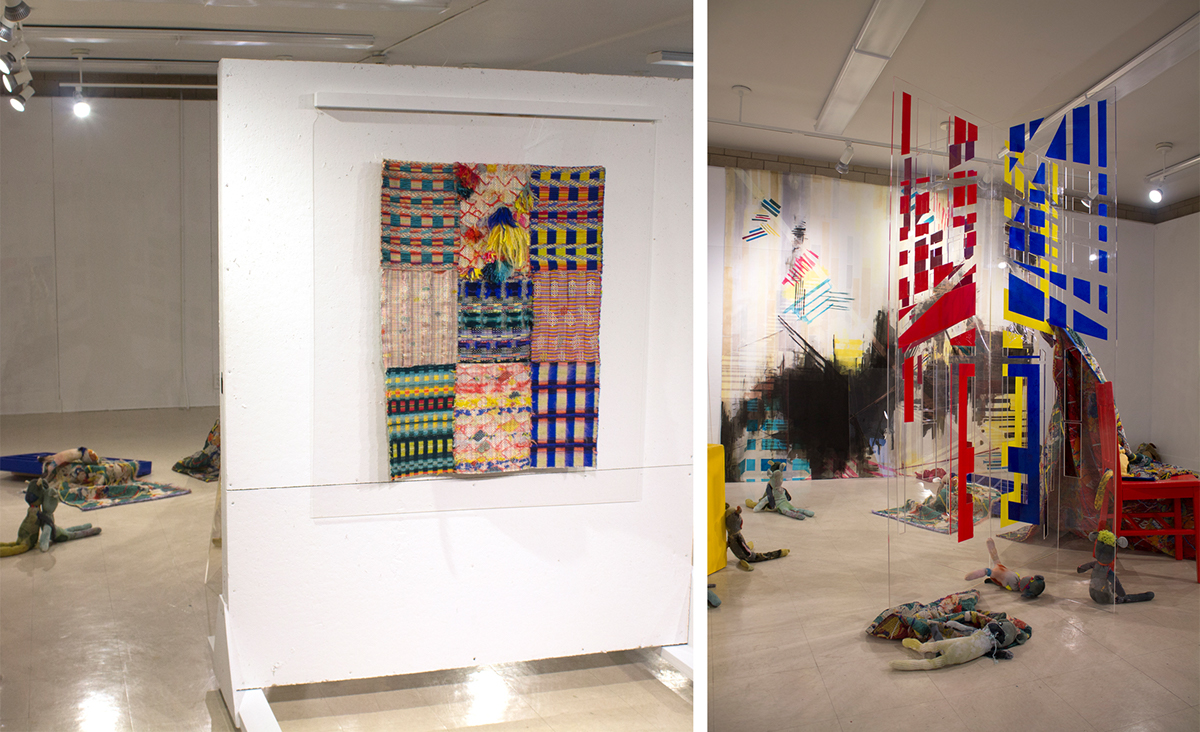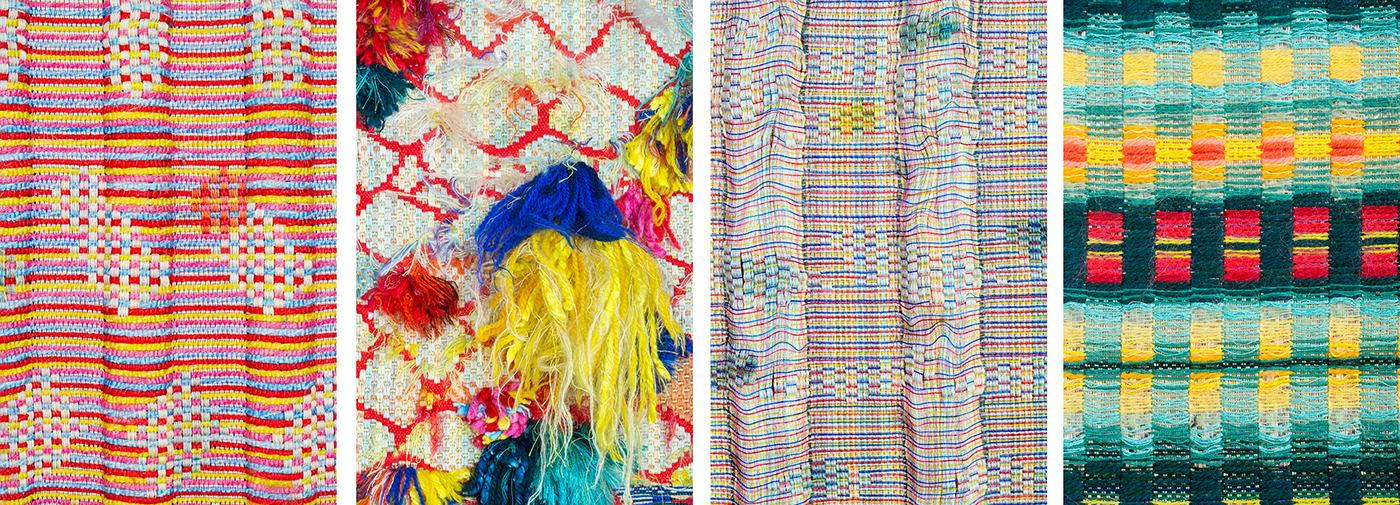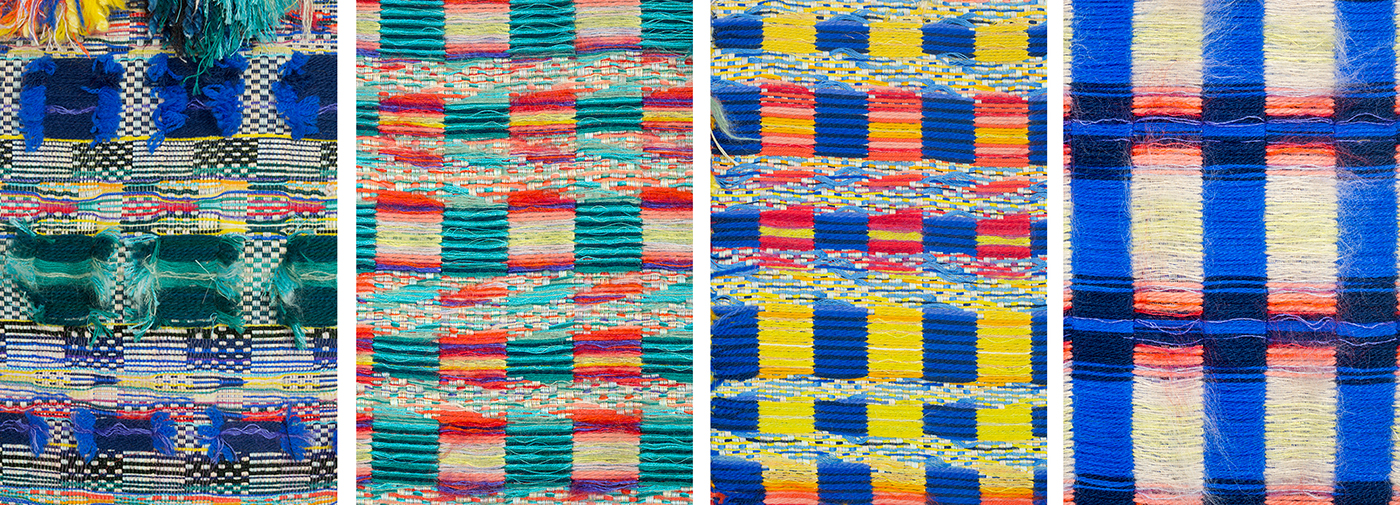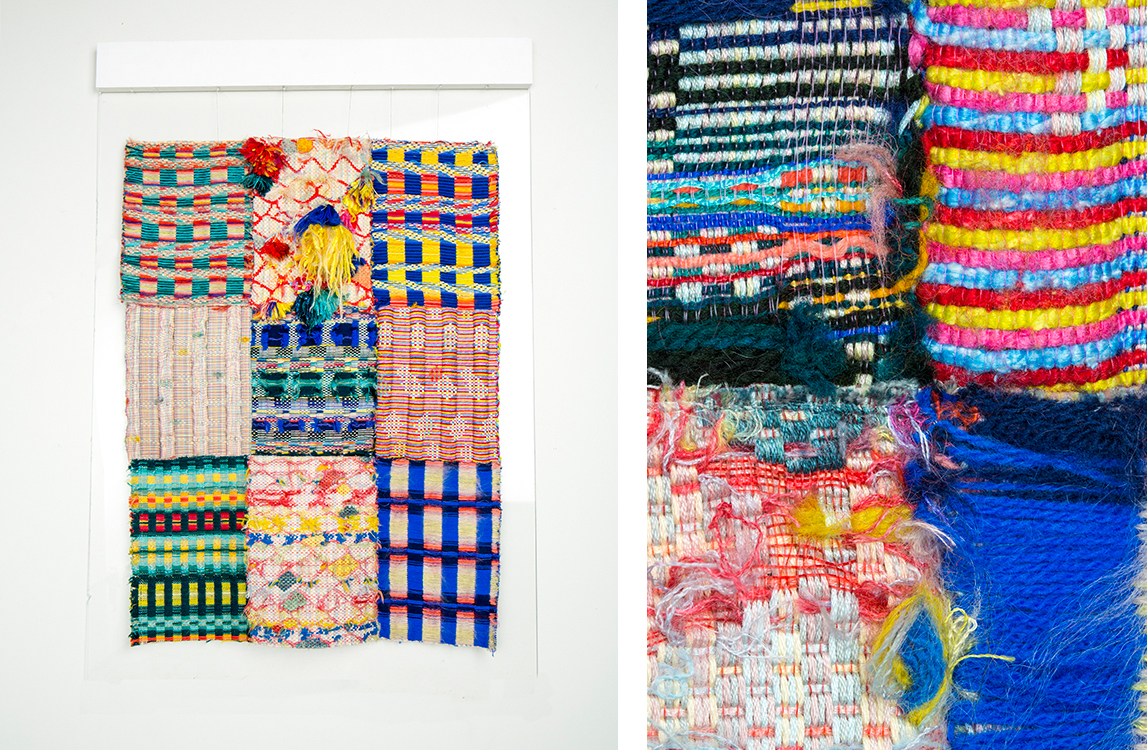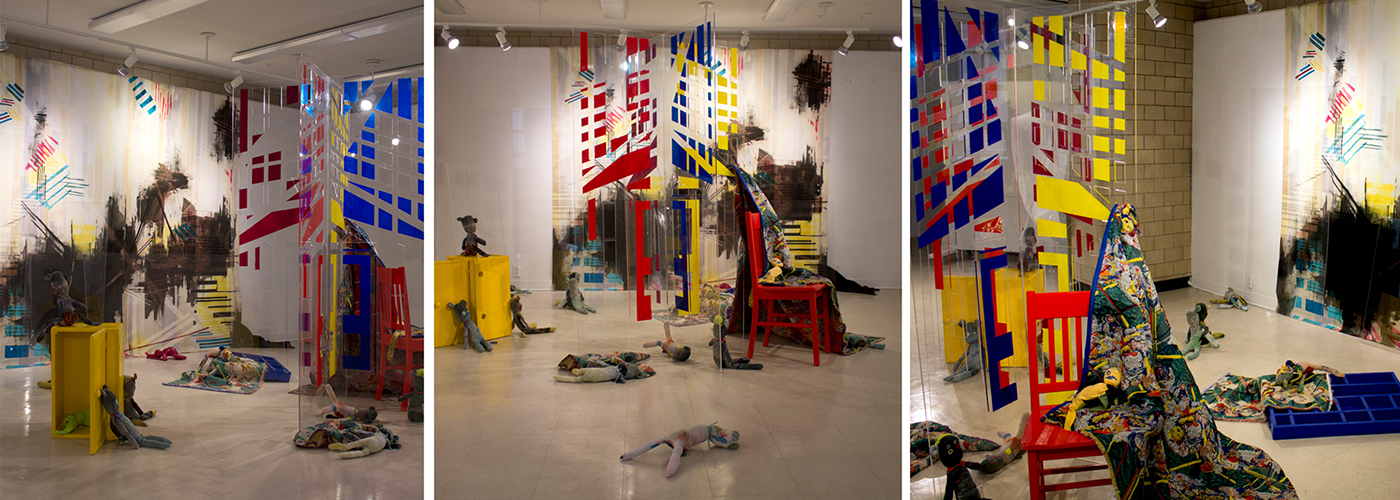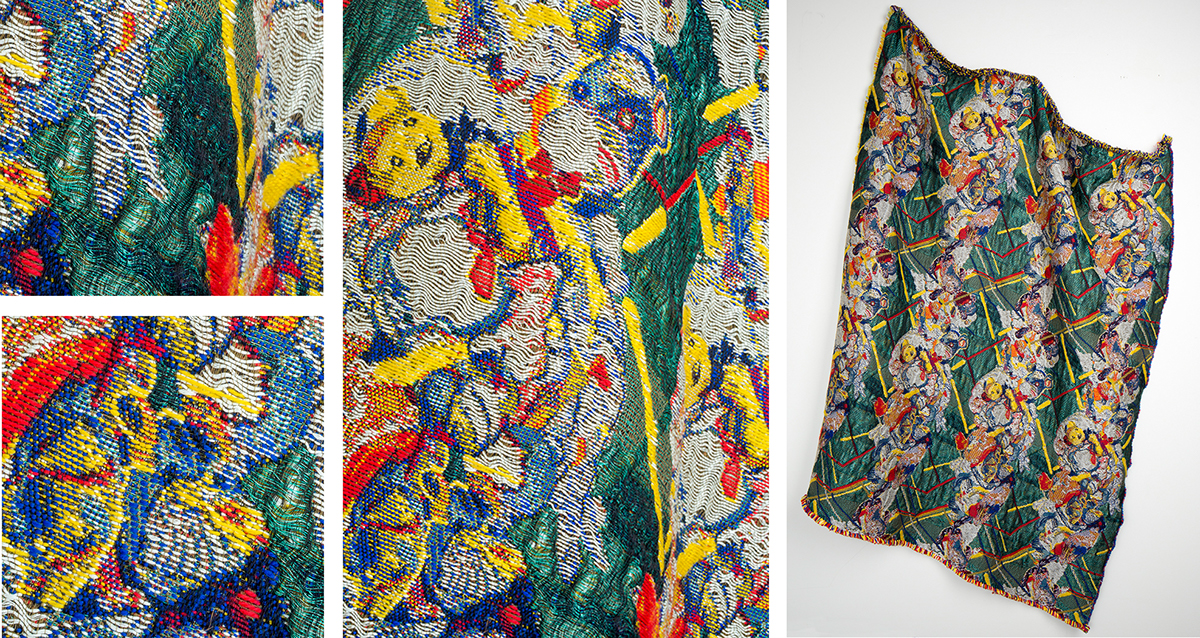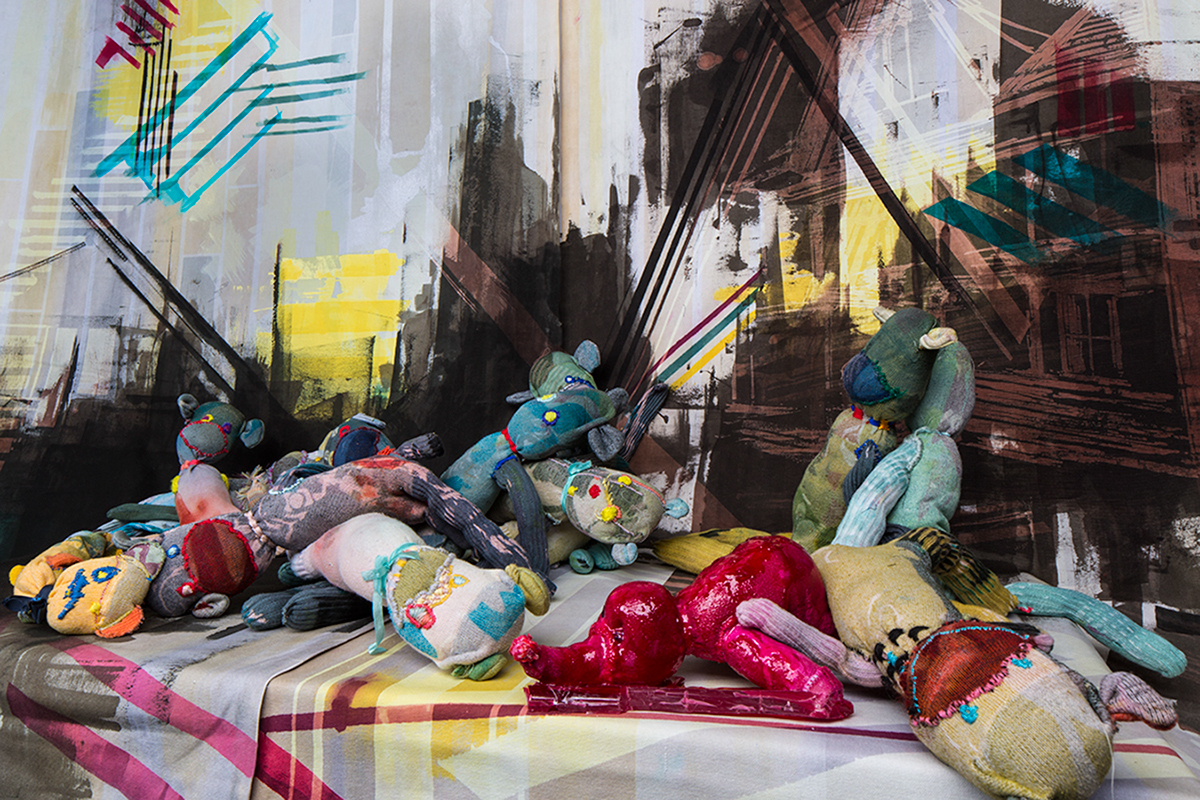The traditional concept of home revolves around an architectural framework. This framework provides a stage for encounters with objects and possessions. A house is not a home. Greeted by a colorful woven facade, the viewer turns the corner to see a scene reminiscent of a left-open toy box surrounded by clear, reflective plexi-glass working to be a bright, somber, and disorienting space. Hand made stuffed animals and hand woven fabrics wear a layered patina to represent time and familiarity like our own worn out, loved objects. Among topically treated seemingly mass produced objects and forms the emotional quality of the manufactured objects are meant to suggest the feeling of familiarity and simultaneous distance between memories and material. The space has the appearance of action, but the absence of bodies that might have caused it. Codified architecture of a house, in a manner of animation, acts as both a container and participant among people, memories, and objects. Absent Presence aims to be a similar container, to challenge the viewer’s perception in the encountered space, to reflect on shared experiences with objects and most importantly to ask if we are the possessors or the possessed by our belongings and dwellings in the material world.
Images by Eric Dynowski
